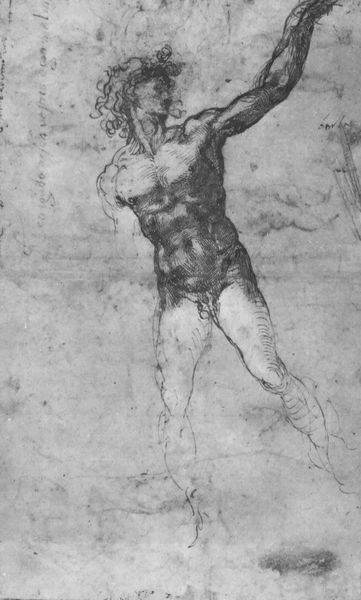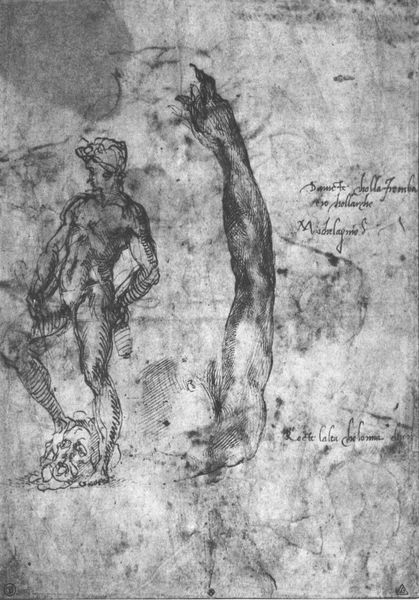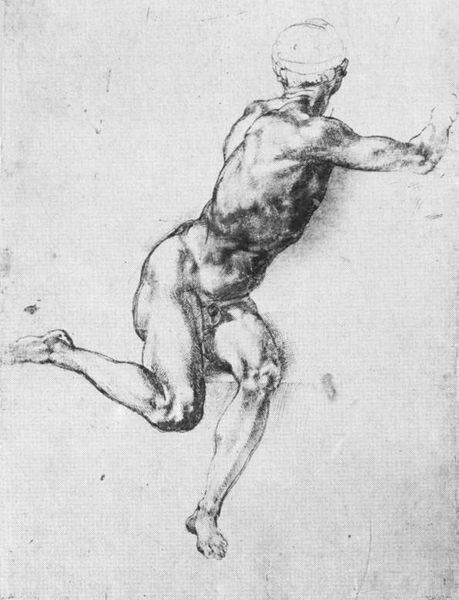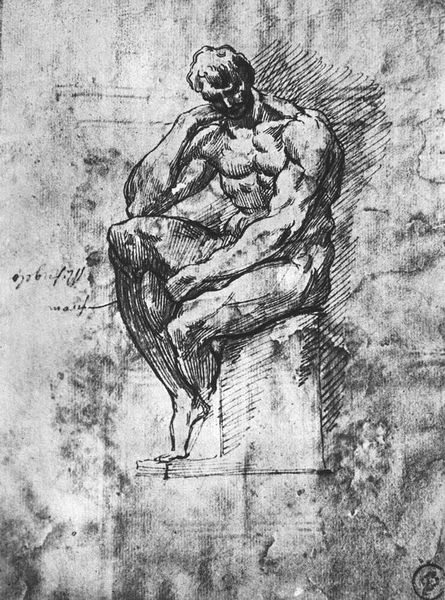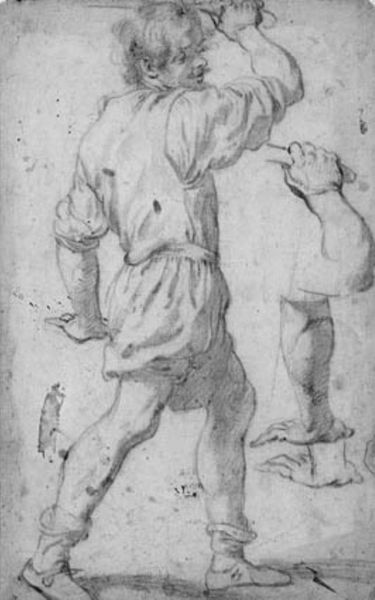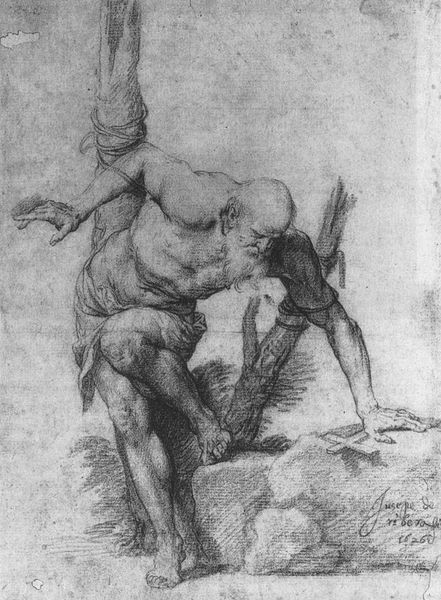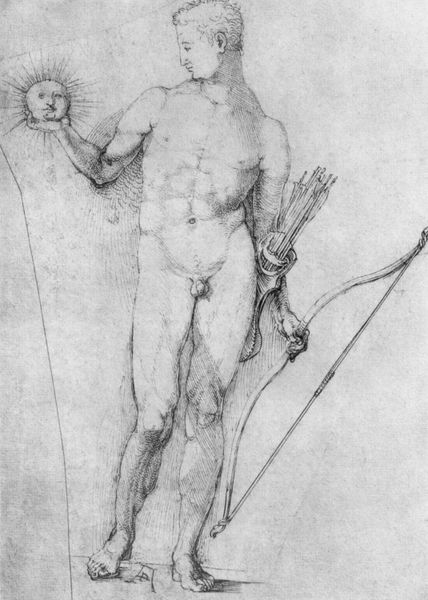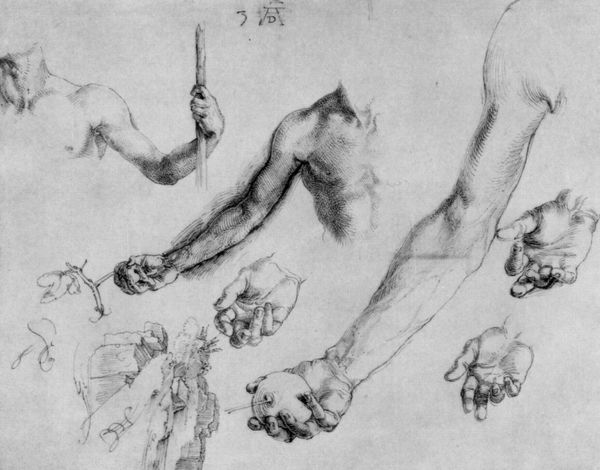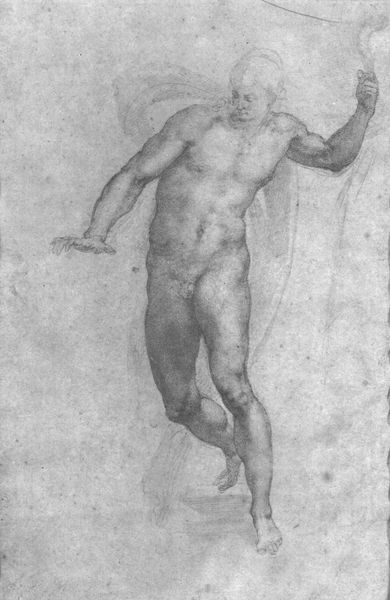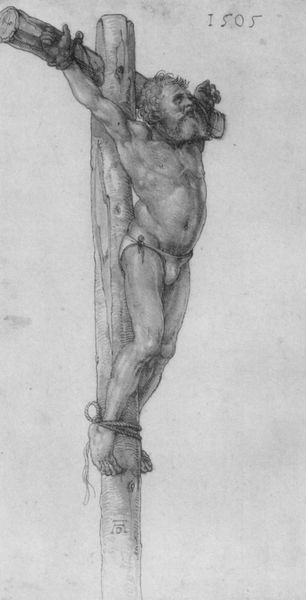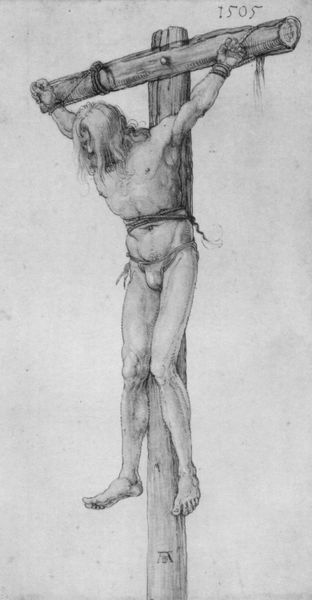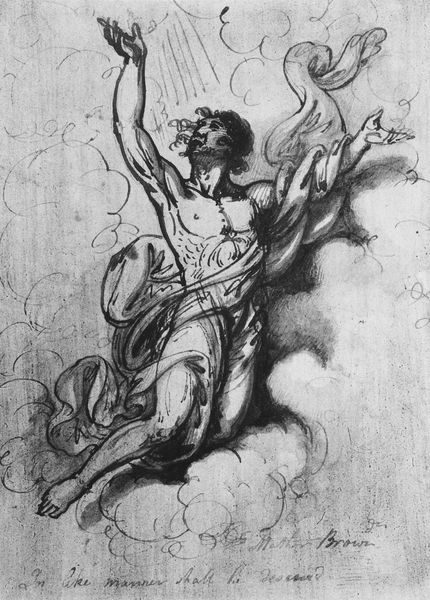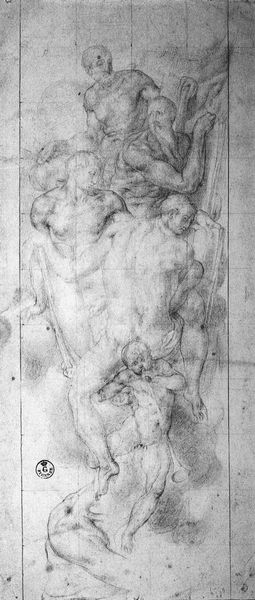
drawing, pencil
#
drawing
#
figuration
#
11_renaissance
#
sketch
#
pencil
#
italian-renaissance
#
nude
#
male-nude
Dimensions: 34 x 16.8 cm
Copyright: Public domain
Curator: At first glance, this 1504 pencil drawing, "Male nude and arm of bearded man," seems…well, like a really buff guy and a disembodied arm. Sort of floating there on the Louvre's paper canvas. Editor: Floating is an interesting choice of words. It’s like these bodies are resisting gravity. This resonates deeply, considering Michelangelo’s location and political engagement at that time: Florence during the establishment of its Republic and its efforts to cast off the old orders. Curator: Right, right! But doesn’t it strike you how intensely Michelangelo's focused on musculature? Every line practically screams "anatomy!" I can almost feel the texture of that paper and the scratch of the silverpoint as he rendered these incredible forms. Editor: Absolutely. The focus on musculature isn’t merely about anatomical accuracy, it’s about the glorification of the male form and strength at a critical juncture. It presents an idealized body, one associated with power but accessible and not of the nobility only. Look at that tension. It isn’t static; the tension indicates someone ready to face down tyranny. Curator: True. But the lack of facial details kind of bothers me, especially in the first nude. The energy and expressiveness is all in the body; even the positioning feels active! The subject feels like a dancer but lacks a full presence or awareness; so maybe that lack of focus brings this artwork more within the realm of a classical subject instead of a real man. Editor: I'd suggest that this ambiguity surrounding identity broadens its application: that the form isn’t specific is more helpful and encouraging in getting others to identify with it in their political struggles. Even the fragmented rendering – we are getting just body parts, some with hair detail and others more skeletal and less refined. This encourages identification to other parts of the working class who might not have been granted visibility but contribute vital skills and strength to that society. Curator: Interesting take, truly. Makes you think how much those Italian Renaissance masters played with the ideals of beauty versus… well, social commentary! Editor: Exactly, and to appreciate this is to recognize how intersectionality was essential to making these political messages land well and influence action! Curator: A brilliant insight that changes everything about this Renaissance masterpiece! Editor: And perhaps prompts us to reassess those same visual strategies even in modern sociopolitical movements today.
Comments
No comments
Be the first to comment and join the conversation on the ultimate creative platform.
